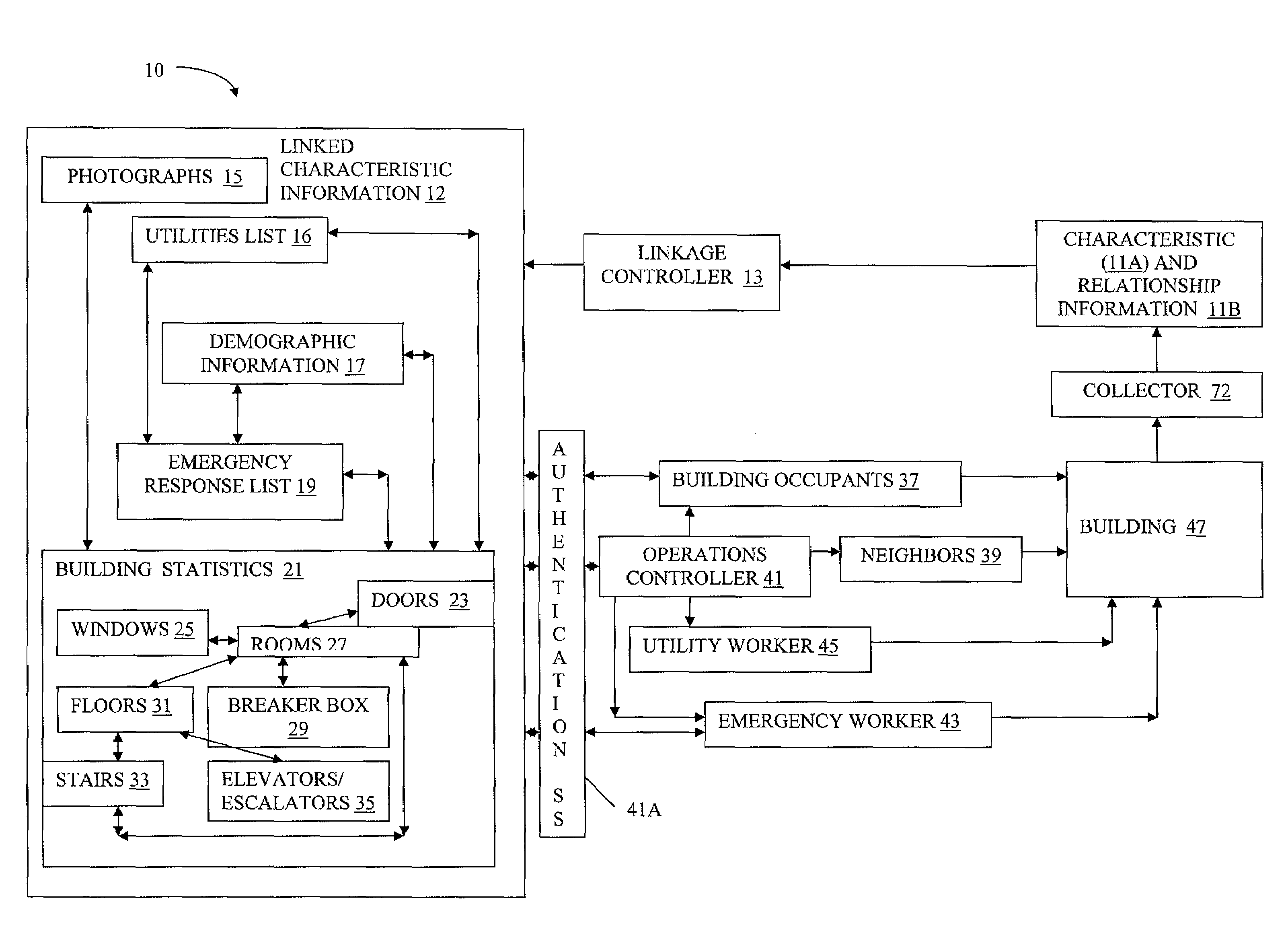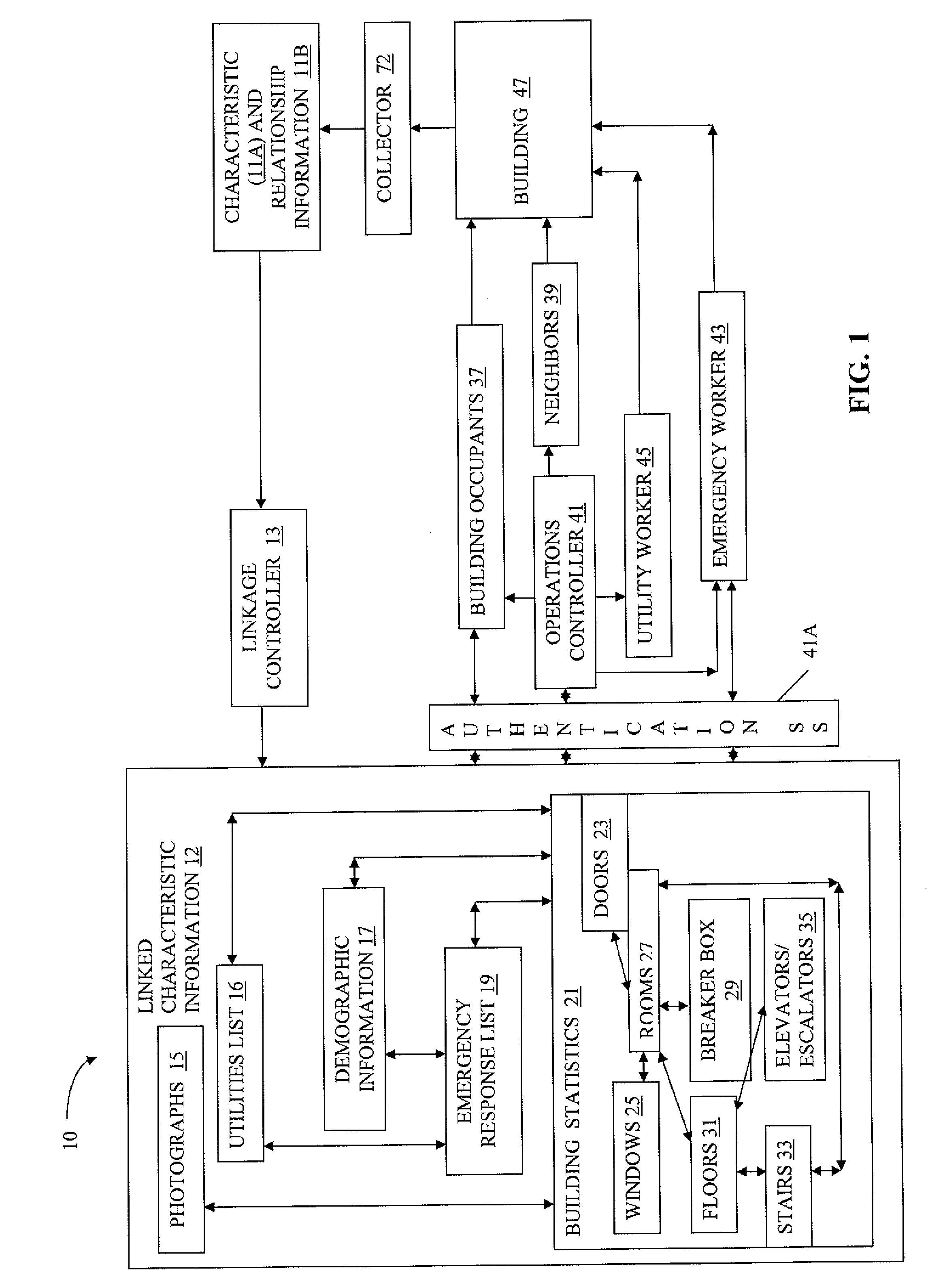System and method for automated building incident response
a technology for building incident response and system, applied in the field of incident response, can solve problems such as the inability to provide dimensional and other structural information, the damage or destruction of buildings with regularity, and the adverse effects on neighbors and occupants
- Summary
- Abstract
- Description
- Claims
- Application Information
AI Technical Summary
Benefits of technology
Problems solved by technology
Method used
Image
Examples
Embodiment Construction
[0028]The present invention is now described more fully hereinafter with reference to the accompanying drawings, in which the illustrative embodiment of the present invention is shown.
[0029]Before the figures are described, an example process for data collection is given to orient the reader. For example, if a building's floor plan is available, an analyst walks through building to verify the floor plan. During the walk-through, the analyst numbers each of exterior doors and photographs, perhaps digitally, the exterior door locations counterclockwise around the building, following police or command system protocol. The analyst further photographs places in the building where large numbers of people would be found. After completing the walk-through, the photographs can be labeled and changes can be made to the floor plan as noted in the walk-through. A list of relevant people and their contact information for the building can be prepared. Relevant statistics can be compiled such as, ...
PUM
 Login to View More
Login to View More Abstract
Description
Claims
Application Information
 Login to View More
Login to View More - R&D
- Intellectual Property
- Life Sciences
- Materials
- Tech Scout
- Unparalleled Data Quality
- Higher Quality Content
- 60% Fewer Hallucinations
Browse by: Latest US Patents, China's latest patents, Technical Efficacy Thesaurus, Application Domain, Technology Topic, Popular Technical Reports.
© 2025 PatSnap. All rights reserved.Legal|Privacy policy|Modern Slavery Act Transparency Statement|Sitemap|About US| Contact US: help@patsnap.com



